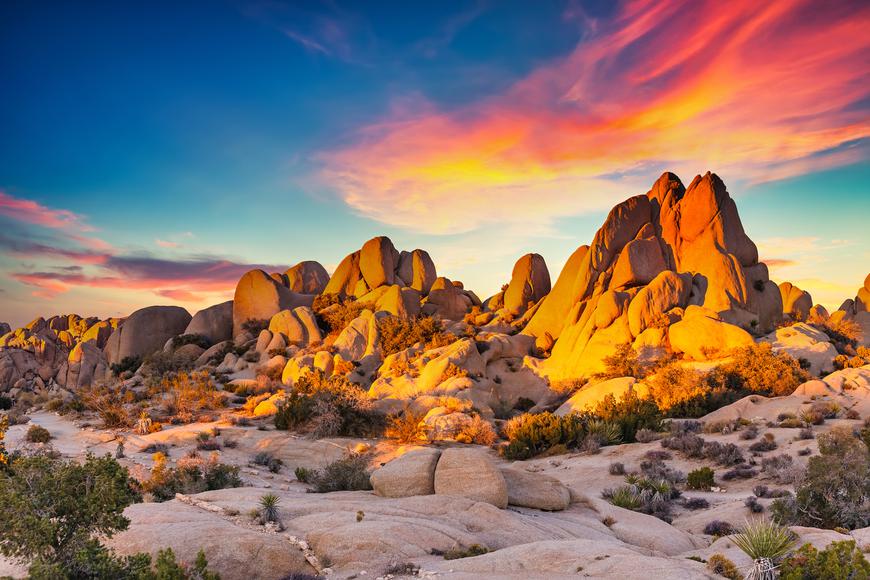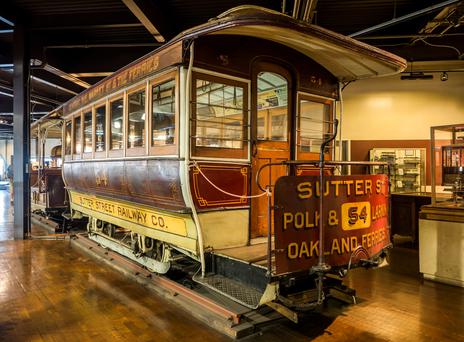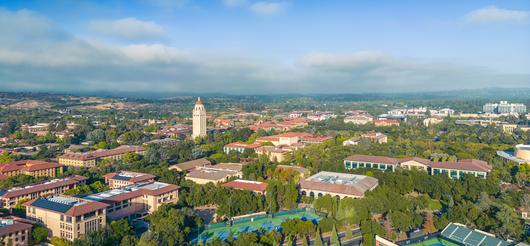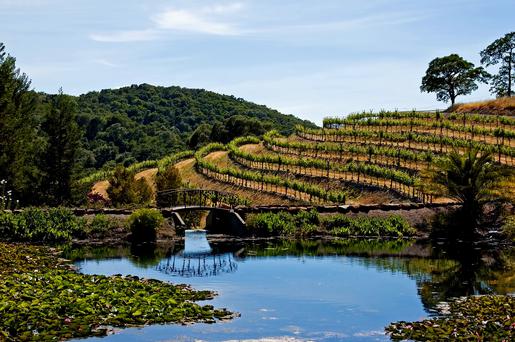Joshua Tree National Park, named for its iconic twisted, spiky Joshua trees, is a pristine expanse of desert located in southeastern California. While the park is a must-visit any time of the year, the fall months bring a unique blend of cooler temperatures, vivid colors, and heightened desert activities. Here's what you can expect when visiting Joshua Tree in the fall.
-
Mild Temperatures: One of the most significant advantages of visiting Joshua Tree in the fall is the relatively cool climate. The scorching summer heat subsides, with daytime temperatures ranging from the 70s to the 80s (°F), making hikes and outdoor activities much more enjoyable. Nights can be chilly, so don't forget to pack layers!
-
Golden Sunsets and Crisp Nights: The fall months in Joshua Tree offer photographers and nature enthusiasts the chance to witness ethereal sunsets. The skies get painted with shades of pink, orange, and gold, beautifully contrasting the dark silhouettes of the Joshua trees. As the night takes over, the clear desert skies come alive with stars, offering some of the best stargazing opportunities.
-
Lively Fauna: While many desert animals become nocturnal in the summer to escape the heat, the cooler fall temperatures bring creatures like bighorn sheep, roadrunners, and coyotes out during the day. Early morning or late afternoon hikes increase your chances of spotting these beautiful animals in their natural habitat.
-
Flora in Bloom: While spring is typically associated with desert blooms, some cacti and plants in Joshua Tree produce flowers in the fall. The cooler weather combined with occasional rainfall can trigger species like the pencil cholla and silver cholla to bloom, adding pops of color to the earthy desert palette.
-
Less Crowded: Fall doesn't see the same rush of tourists as spring or winter, giving visitors a more peaceful and personal experience. Trails are less populated, and you have a better chance of finding that perfect campsite without reservations.
-
Diverse Range of Activities: With milder temperatures, fall is an ideal time for a range of outdoor activities. From rock climbing at popular spots like Hidden Valley and Ryan Mountain to hiking trails like Barker Dam or Lost Horse Mine, there's something for everyone. Nighttime campfires become more enjoyable, and for the spiritually inclined, the Integratron sound bath near Joshua Tree offers a unique rejuvenating experience.
-
Special Events: Fall in Joshua Tree is also marked by events and festivals. The Joshua Tree Music Festival, usually held in October, celebrates music, art, and community, drawing visitors from all over. Workshops, art installations, and live performances create a vibrant atmosphere.
Preparation Tips for Your Fall Visit:
- Pack appropriately: The desert can be unpredictable. Bring sun hats and sunscreen for the day, but also warm clothing for the cool nights.
- Stay Hydrated: Even in cooler temperatures, the dry desert air can be deceiving. Always carry enough water, especially during hikes.
- Respect the Ecosystem: Joshua Tree is home to fragile ecosystems. Stick to designated trails, pack out all trash, and maintain a safe distance from wildlife.
In conclusion, a fall visit to Joshua Tree National Park promises a serene blend of beauty, adventure, and cultural experiences. Whether you're a seasoned hiker, a rock-climbing enthusiast, or someone seeking a peaceful retreat, Joshua Tree in the fall has something magical to offer.






